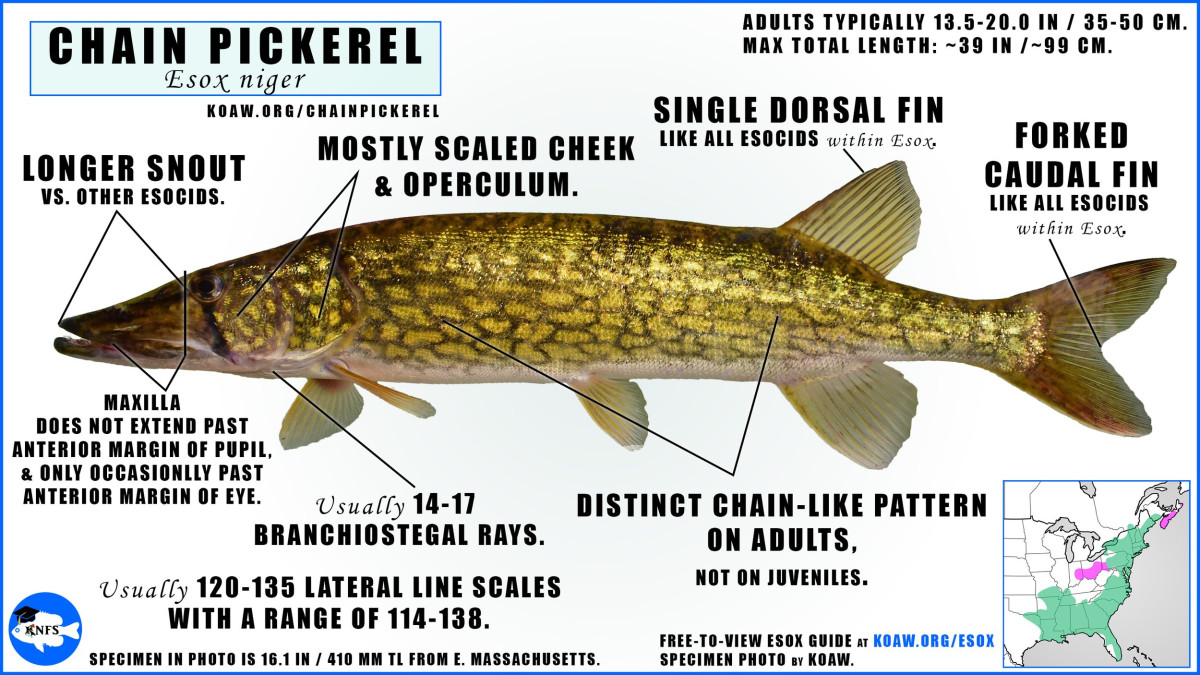Chain pickerel are aggressive fighters once hooked, thus making them an exciting catch. They are active through the winter, under the ice, so they can be caught by ice anglers. What are ideal Water Conditions for Pickerel?
Pickerel are found in freshwater habitats:
- Ideal H2O temperature: 65-75°F
- H2O quality: neutral pH 6.5 and 7.5.
- Abundant aquatic vegetation
- Diverse depth & structure
- Shallow areas for spawning
- Adequate cover for hunting
- Well-oxygenated water-4 mg/L
- Balanced ecosystem for healthy populations-Low pollutants
Introduction:
Pickerel, a popular freshwater game fish, are known for their elusive nature and voracious appetite. Understanding the ideal water conditions for pickerel is crucial for anglers and conservationists alike. From temperature and water quality to habitat preferences, various factors play a pivotal role in determining the health and abundance of pickerel populations. In this discussion, we will delve into the specific water conditions that pickerels prefer, shedding light on their habitat requirements and the significance of maintaining suitable environments for these fascinating species.
Ideal Water Conditions for Pickerel
Importance of water quality for pickerel habitat
FAQ’s
Why is aquatic vegetation important for pickerel?
Aquatic vegetation is crucial for pickerel as it provides cover for hunting and shelter from predators. Additionally, it serves as a spawning habitat and supports the overall health of freshwater ecosystems, contributing to pickerel population sustainability.
How does water quality affect pickerel habitat?
Water quality directly impacts pickerel habitat by influencing their health, reproduction, and overall habitat suitability. Factors such as pH levels, oxygen content, and pollutant concentrations can affect pickerel behavior, growth, and survival.
What role does water depth play in pickerel habitat?
Water depth plays a critical role in pickerel habitat by providing diverse environments for feeding, spawning, and seeking refuge. Pickerel are often found in shallow areas near the shoreline for spawning and hunting, while deeper waters adjacent to shallower areas serve as refuge during periods of high temperatures or predation pressure.

